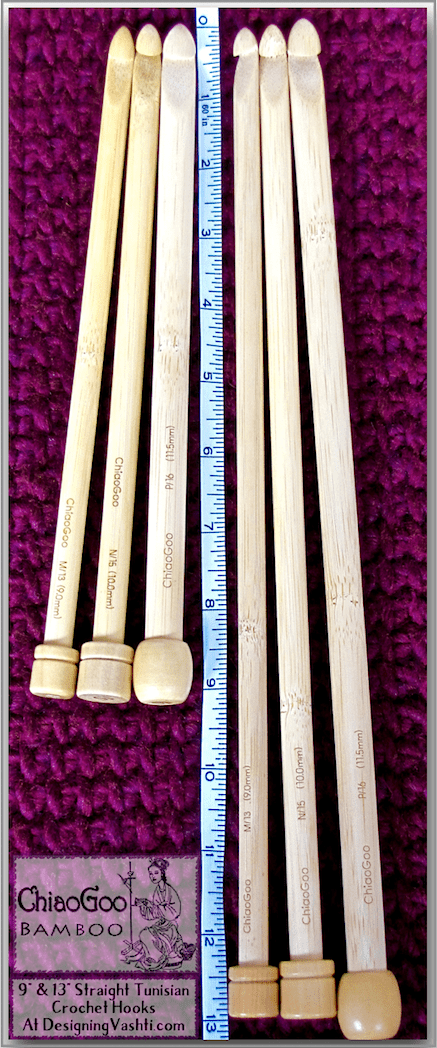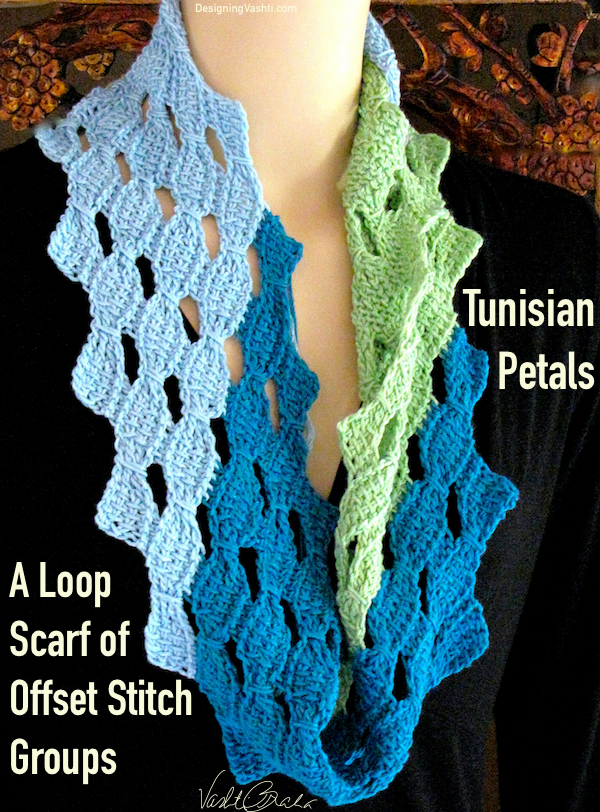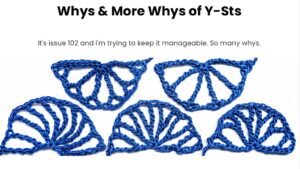
The free shipping makes this a good price on these 100% bamboo Tunisian crochet hooks (a.k.a. afghan hook). ChiaoGoo hooks are carved from the strongest bamboo of all, Moso: it has the tensile strength of steel! They’re imported from China by a family-owned company in Michigan. ChiaoGoo has cheerfully sponsored my crochet classes for years.
This hook is perfect for most of my students because it’s light weight, light colored, and carved in an all-purpose shape. Bamboo hooks are 60% lighter than aluminum hooks of the same size.
The surface offers students some control over the thin, slippery luxury yarns I tend to use for my airy Tunisian designs. My ChiaoGoo hooks get even better with age as they acquire a soft patina.
The 9-inch (23 cm) length of this crochet hook is a convenient size for two reasons. First, because it holds enough stitch loops on it to crochet several of my Tunisian shawl designs. (An advantage when using the thinner yarns for lacy drape.) Scroll to the bottom to see which crochet patterns call for this Tunisian crochet hook length.
Second, because it’s only a bit longer than “regular” (non-Tunisian) crochet hooks. I often reach for one of these for regular crochet if my shorter hooks are not at hand.
As with other Tunisian (afghan) hooks, this hook does not have a thumb rest, and includes a knob on the end to keep stitch loops from sliding off. I don’t find the knob to be heavy or intrusive.
If your order contains more than one shippable (not downloadable) item, the shipping method automatically upgrades FREE from USPS First Class to Priority Mail. Priority mail shipments take just 2 or 3 days to arrive under normal conditions.











